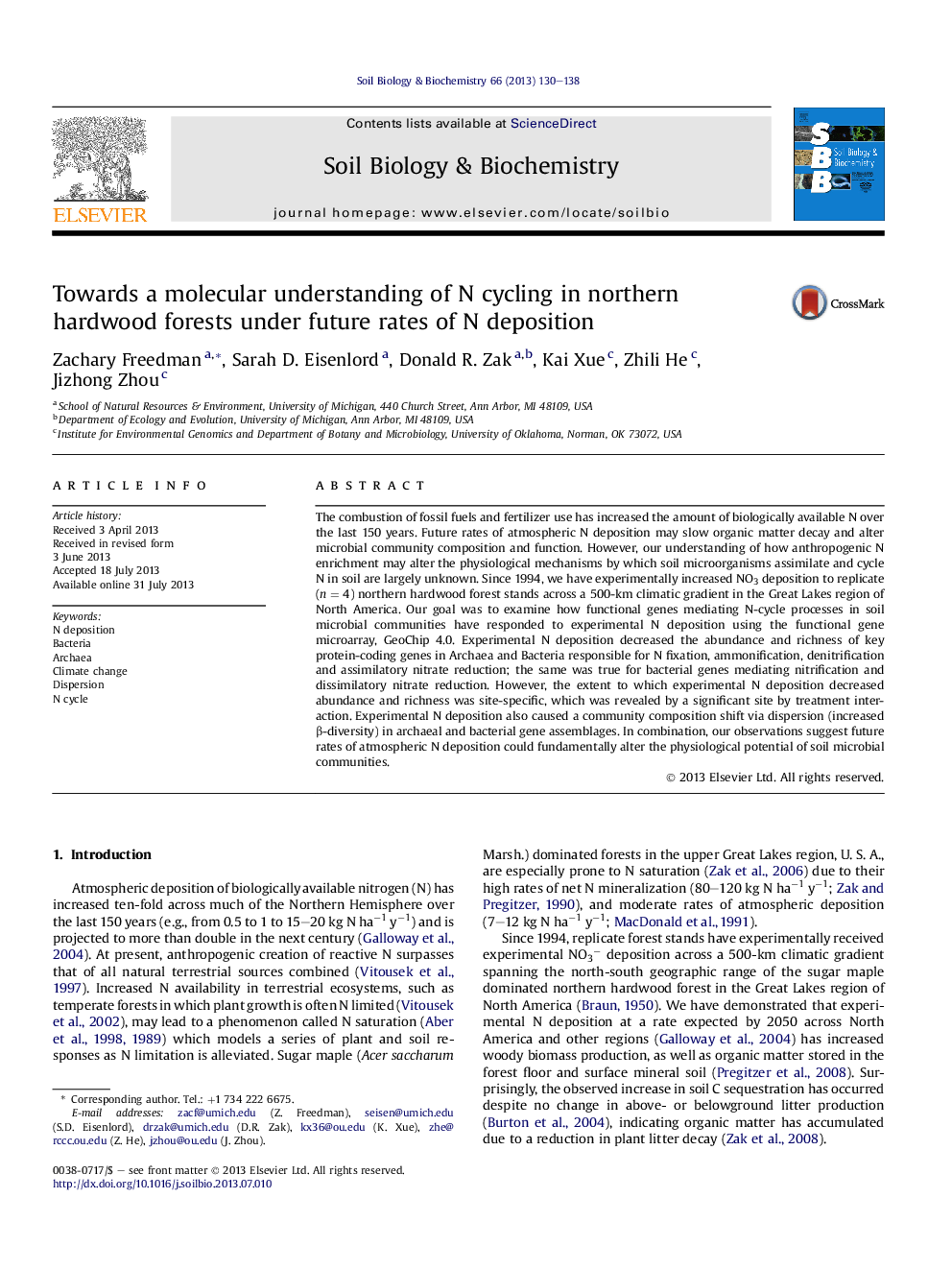| کد مقاله | کد نشریه | سال انتشار | مقاله انگلیسی | نسخه تمام متن |
|---|---|---|---|---|
| 2024689 | 1542618 | 2013 | 9 صفحه PDF | دانلود رایگان |

• We examined the effect of elevated N deposition on N-cycling Bacteria and Archaea.
• A decrease in abundance and α-diversity of N-cycling assemblages was noted.
• N-cycling assemblages exhibited increased β-diversity under increased N deposition.
• Assimilation, denitrification, and nitrification potential were especially affected.
The combustion of fossil fuels and fertilizer use has increased the amount of biologically available N over the last 150 years. Future rates of atmospheric N deposition may slow organic matter decay and alter microbial community composition and function. However, our understanding of how anthropogenic N enrichment may alter the physiological mechanisms by which soil microorganisms assimilate and cycle N in soil are largely unknown. Since 1994, we have experimentally increased NO3 deposition to replicate (n = 4) northern hardwood forest stands across a 500-km climatic gradient in the Great Lakes region of North America. Our goal was to examine how functional genes mediating N-cycle processes in soil microbial communities have responded to experimental N deposition using the functional gene microarray, GeoChip 4.0. Experimental N deposition decreased the abundance and richness of key protein-coding genes in Archaea and Bacteria responsible for N fixation, ammonification, denitrification and assimilatory nitrate reduction; the same was true for bacterial genes mediating nitrification and dissimilatory nitrate reduction. However, the extent to which experimental N deposition decreased abundance and richness was site-specific, which was revealed by a significant site by treatment interaction. Experimental N deposition also caused a community composition shift via dispersion (increased β-diversity) in archaeal and bacterial gene assemblages. In combination, our observations suggest future rates of atmospheric N deposition could fundamentally alter the physiological potential of soil microbial communities.
Journal: Soil Biology and Biochemistry - Volume 66, November 2013, Pages 130–138